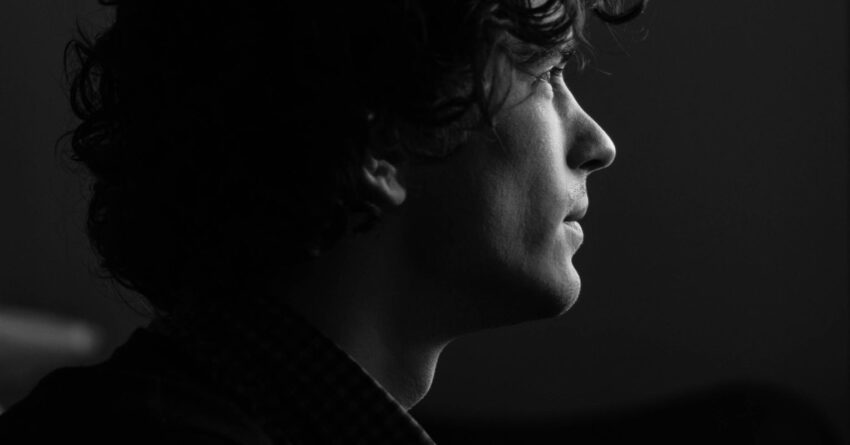In recent years, we have had an outpouring of writing about the mental health crisis among the young, with startling statistics about increased depression, anxiety, suicidal thoughts, attention deficit, and other distress. As one who has written almost monthly on the subject, I have to ask: Is our concern misplaced? Is the “crisis”—at least as we discuss it—a myth?
Some critics believe it is. They characterize talk of a crisis as “youth-bashing” and yet another instance of the old, chronic tendency of adults to disparage “kids these days.” According to one line of argument, crisis talk is confusing the increased willingness of young people to talk about mental health problems, on the one hand, with a genuine increase in the problems themselves, on the other. The rising numbers, in this view, don’t reflect greater levels of distress but the fact that young people have a “more open and honest relationship with their mental health.” Openness about distress leads to more diagnosing and treating. This is not a crisis; it is “good by any measure.”
In another version, the sense of crisis reflects the activism of “therapeutic entrepreneurs.” We misinterpret the statistics as showing greater levels of distress when they simply reflect the professional redefinition of everyday struggles as health conditions requiring therapeutic intervention. While young people once understood their emotional challenges in nondiagnostic terms and dealt with them informally, they are now directed to a professional’s office. More are consequently diagnosed and treated, fueling the perception of crisis.
While, to my knowledge, none of the critics study the epidemiology of mental health, their objections cannot be ignored. They do not demonstrate that the crisis is a myth, but they encourage us to make key distinctions.

Source: Demeter Attila/Pexels
Pathologizing Normal Experience
There is no question that talking about “mental health” has become something of a quagmire.
Psychiatric language, diagnostic categories, and explanatory models, as I showed in my book Chemically Imbalanced, are now part of our everyday vocabulary. With or without professional input, people routinely use these terms to make sense of their painful emotions and encounters and to inform their self-understanding. They interpret shyness and other personality traits as symptoms of psychiatric conditions, as well as other life problems whether resulting from failures, personal conflicts, or other emotional distress.
The mental health complex itself took the lead in blurring boundaries. Professionals increased the number of disorders, lowered the thresholds for diagnosing them, and stretched the meaning of disorders to market them to the general public. By widening the diagnostic net, they encouraged more and more people to seek help and treatment, normalized high estimates of disorder, and fostered a pervasive sense of vulnerability.
Young people have been caught up in the pathologizing wave. In addition to being diagnosed and treated in record numbers, they have appropriated the language of symptoms and disorders. A whole army of teen influencers, for instance, has emerged on social media claiming to identify new indicators of disorder, encouraging self-diagnosis, and even fueling contagion. They stress the value of diagnostic language for explaining untoward experience and easing feelings of inadequacy. Some students have told me that having a diagnosis is “trendy.”
Should we be alarmed, then, that young people are more likely to report mental health concerns and seek treatment than previous generations? Is this a healthy sign of openness? Is it simply a reframing of ordinary youth angst and identity struggles in a medicalized language?
What Are We Talking About?
I believe the alarm is justified. There is a crisis among young people that includes ubiquitous feelings of inadequacy and emptiness, struggles with body image, suicidal thoughts, addictions, and other anguish. But distinctions are called for if we are to understand the real causes of concern.
First, youth distress must be disentangled from the question of mental disorder. Our understanding of mental disorder is surprisingly vague, but the general idea is that it signifies a dysfunction (of mind or brain) that mechanistically throws off symptoms—troubling thoughts, behaviors, or feelings. What makes the “symptoms” abnormal is that they have no reasons, no logical explanation. The principal youth struggles, however, do have reasons. Their distress is a response to the demands being made on them.
Second, it is also a mistake to imagine the crisis as simply an intensification of the sort of problems that kids have always had. Not everything has changed, of course, but the dominant social norms and ideals of self are new, having emerged in recent decades. At the heart of the youth crisis is the struggle to live up to these demanding expectations, on which both self- and social approval have come to depend.
In my investigations, I find that young people are now expected to conceive of themselves as the center of action, internally driven, and self-realizing. When asked what it is good to be, they identify many qualities, characteristics, and competencies. They are to be socially adept, smart, self-disciplined, constantly improving, striving to be the best, living up to their full potential, standing out from the crowd. And the list goes on. Class discussions usually generate 20 to 30 such items. Though certainly complex, these expectations can at least be named and cataloged.
The big challenge comes in trying to specify just how such heavy demands might be met.
There is no roadmap. Instead, students describe an alert and subtle performance of self that is strategic and involves situation-by-situation improvising. For example, they observe the following:
- It is imperative to be unique but “not in a weird way, only in a socially acceptable way.”
- It is essential to be hard-working but not in a way that gets you “labeled as desperate.” Says another, elaborating, “If you need to work hard to gain ‘success,’ you are probably not very smart, but if you are able to gain ‘success’ with only your smarts, you should be applying yourself more.”
- “If you have lots of romantic interests, you are too easy or a player, but if you do not have enough, you are socially awkward or a loser.”
- “You need to have enough self-confidence to be charming and cool, but not so much that you are arrogant.”
You get the idea. There is always a “but,” a contingency, a moving goalpost, an embarrassing booby trap they might set off or fall into.
They are trying to find their way with no guide to translate the demands of good selfhood into action, no defined criteria for fulfilling them, no socially structured avenues for their attainment, no pre-set limits or endpoints, and no conventional means of escape.
And, at every turn, they are exposed to the potentially harsh consequences of shifting expectations, their own inexperience and fallibility, and the judgment of the institutions whose approval serves as the ultimate basis for measuring success. A lot is at stake. A lot can go wrong.
Trying to fulfill such impossible demands is the chronic stress factor. This is the burden generating anxiousness, disappointment, exhaustion, and despair. This is the fuel that is feeding the fire.
